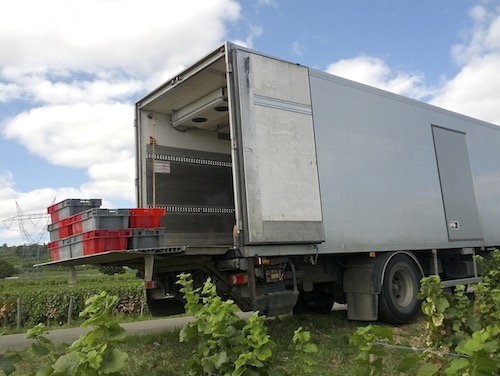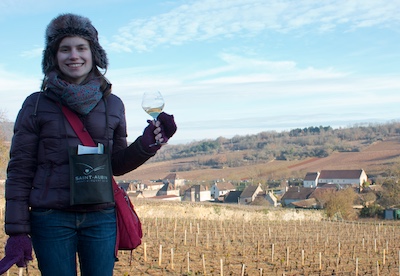A couple weeks ago, I went to Berlin for the third time. Berlin is one of my favorite cities in Germany, but I’ve never written about it. So I thought I’d change that. Berlin is full of history and fun, but at extremely low prices (ridiculously low, actually). Maybe you’ll get some ideas.
Tiffany was with me on the first two trips. We went one time for an extended weekend while we were living in Germany. On that first trip we stayed in a hostel that was situated on the location of the old death strip in Mitte. There was an incredible amount of history in that area and this is one of the things that I liked most about visiting Berlin. As Americans who were kids when the Berlin wall came down, we were both familiar with it, but it was all very abstract. I never really knew much about the history of the wall or the realities for the people living in the east, or Berlin in general (as it contained, of course, both east and west). The most exciting thing we did was the Trabi Safari, in which I got to drive a Trabant around while a guide communicated from a few cars up. For those who don’t know, the Trabant is the stereotypical east German car. I guess there were actually a couple other makes in the DDR, but the vast majority were Trabants. Citizens waited many years from order to delivery, though over the decades a few million were produced overall. They are interesting in themselves, so maybe I will write more someday. Also, we visited the DDR museum, which was extremely tight and crowded to the point that one time was probably enough for me, but very educational. We also went on a tour about the many escape attempts from east to west Berlin. Finally, we made reservations and visited the Reichstag, which is a must-see tourist attraction, though I think the dome lacks class. There were panels and an audio guide to learn about the history of the building. As I don’t know much about European history, I really like learning this type of stuff when I travel. Berlin is among the best for this.
On our second trip, I was there for a job interview in August down in Teltow, a suburb on the southwest edge of the city. Teltow was nice and I’m sure it’s a friendly and clean place to live, but it is also one of the most boring places I’ve ever visited in Europe. Luckily it is a short S-Bahn ride to Berlin, so after my interview we spent an extra two nights in a small AirBnB place in the Schöneberg district. By this point, we had been out of Germany for quite some time. We’ve just visited on a couple short trips since moving to France, so when we go back we have certain things we like to do. One such thing is having a proper brunch buffet, which we did. On weekends, and even weekdays at some places in Berlin, German cafes often have pretty good buffets. These often even include hot foods such as eggs, which are uncommon in normal European breakfasts. We luckily were there during the International Berlin Beer Festival, so that was pretty interesting. We tried several beers and scored many new coasters for our collection. On our previous trip we had tried to visit the Berlin Cathedral but failed because it is often closed. We almost failed on this trip as well, but we went back on our last morning and did manage to see it and climb up to the top. We’ve been to the top of a lot of German churches, so we shy away from it generally, but it seemed like a proper tourist thing to see.
My third trip, by myself, was for a second interview in Teltow. I won’t mention names, but that job didn’t work out due to a quite friendly but extremely incompetent hiring process. On this trip, I was by myself and I opted to stay two extra nights at Riverside Lodge Hostel in the Kreuzberg district. This turned out to be an awesome hostel and an awesome area. I only paid around 22 Euro per night but it was incredibly clean and friendly. It was a really small place with a very social atmosphere and the owner was enthusiastic about recommending things to do in the area. At his suggestion, I had breakfast and coffee at a really cool cafe around the block called Katie’s Blue Cat. Also most of the guests ended up at Wirtshaus Hasenheide for German food on the first night. I visited two other noteworthy places on this trip that I would like to go back to. First is Tempelhofer Feld, which is an airport turned massive park. I had a hard time picturing what it would be like at a park with no trees and such, but it was really quite cool. There were lots of quiet places to sit and many people were running/rollerblading/etc. I just read on Wikipedia that it has since been turned into a refugee camp, so I’m unsure if/when I’ll be able to return. The second cool place I went was Klunkerkranich, in Neukölln. This is a rooftop bar/cafe place with a great view of the city. I was there briefly just to have a quick snack for breakfast before catching the plane, but I’d like to go back. I must warn you though, it’s hard to find. You have to take an elevator up to level P5 in the parking garage of the Neukölln Arcaden and then walk around one of the ramps to reach it (it’s at the top). I’ve read online that there is a cover charge even in the daytime but, for whatever reason, I paid nothing in the morning.
I also want to specifically mention my trip to Cordobar, an amazing wine bar focusing on German and Austrian wines. After checking into the hostel on this last trip, I discovered on Facebook that Yann, the brother of a Burgundian colleague of mine was also in Berlin! He’s a real wine expert so I suggested that we have a drink. We decided on Cordobar, and it was incredible. Yes, a glass of wine was a bit pricey, anywhere from 4.50 to 8.50 if I recall correctly (they have a bottle for EUR 1699.00). But this was really good stuff and the bartender was very knowledgeable and passionate about wine. Once he found out that we live in Burgundy, he started pouring us samples and asking us to name the grapes and such. I’m only familiar with Burgundy wines, so this was impossible for me, but Yann was having fun with it. I guess one of their focuses is on biodynamic wines, which is obviously nonsense, but I still recommend this place wholeheartedly.
There is a lot of random stuff in here, but hopefully you get some ideas of places to see. Berlin is an incredible city, and I recommend visiting.






 Fromage
Fromage